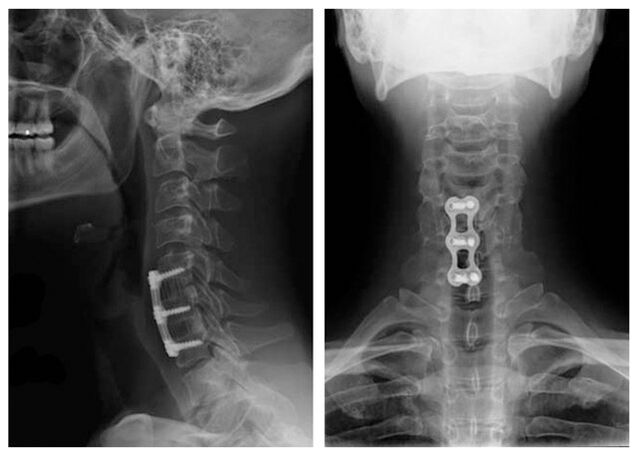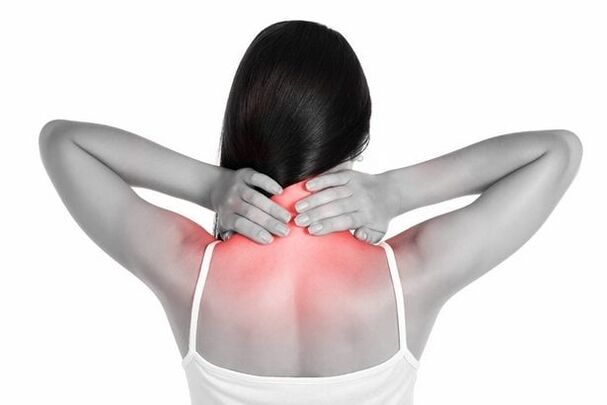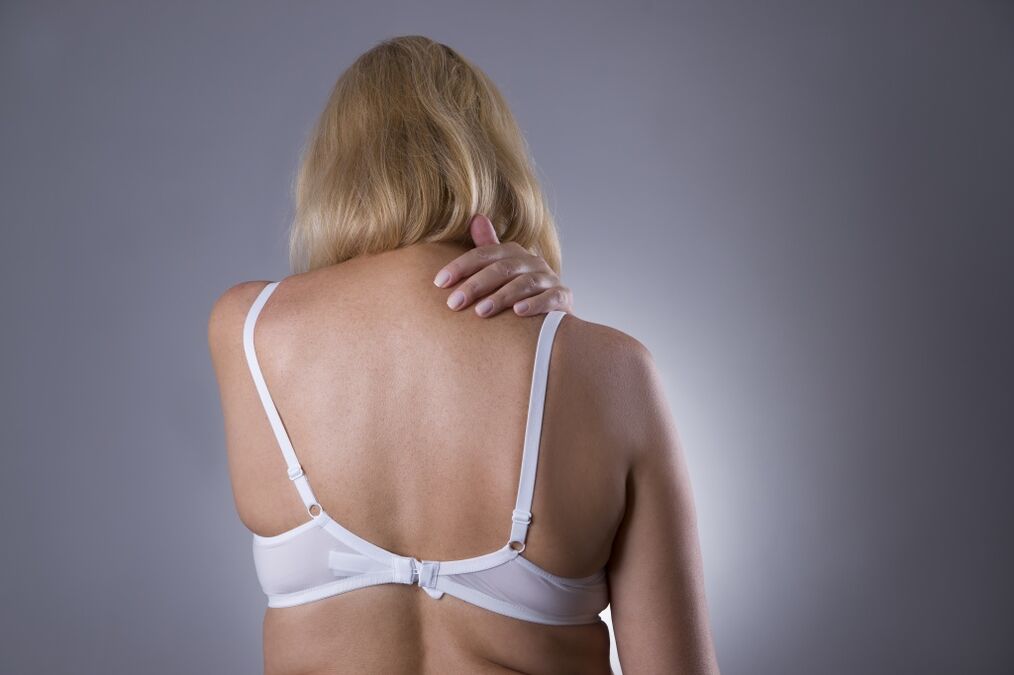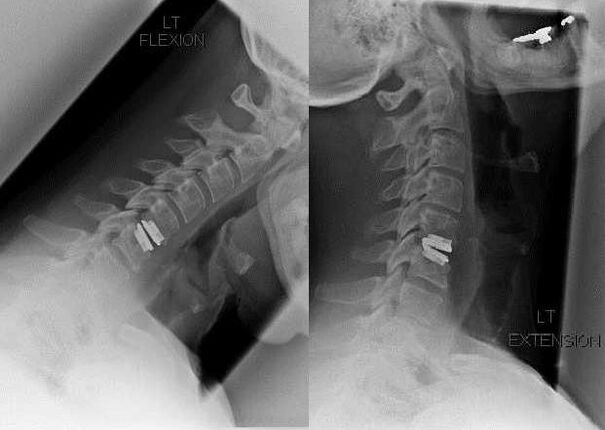The cervical region of the spine is subjected to increased loads, which cervical uterus are trying to lead to balance during the impact of the above sources. This causes the appearance of muscle spasm, which is why the injury to the transport of blood throughout the body. As a result, the formation of anatomical damage was observed.

- Sedentary lifestyle.
- Work associated with long monotonous movements.
- Sport as a severe physical tension.
Osteochondrose, a century disease, and that is the reason, and the rest is more likely to lead to disease development. Disease manifestations are diverse, and in the first visit to neuropathologist, it is not always possible to make an accurate diagnosis. In any case, feeling uncomfortable and the first symptoms, visit Dr. Radiculitis. Diagnostics and starts treatment based on test results. At an early stage to heal, maybe any pathology. The osteochondrosis of the cervical region is chronic, slowly progressive spinal disease, in which they are intended and destroyed and destroyed by spine, intervertebral compounds and disks. Vertificians from the first to seventh, belonging to the cervical region, suffer. As the disease advances, intervertal discs lose their elasticity and strength, flattened, relaxing, their shock absorbers properties worsen. Such a deformity arises due to changes caused by the disorders of power and exhaustion of tissues. These violations are one of the natural processes of body aging, but different overloads, posture disorders, injuries, the innate abnormalities of spine and some other causes provoke early consumption of cartilage and disks. More and more young people choose a sitting job. The absence of properly organized regular loads leads to weakening muscles that improve the spinal column, reduction of metabolism and blood circulation in interfaces. As a result, as a result of a physical activity, the spinal nerve spraying or the form of intervertebral hernia can occur. Spinal deformation (Lordoza, Kifoza, Scoliosis) is one of the causes of osteochondrose
- excessive physical activity in sports or difficult physical work;
- hereditary predisposition;
- Hypothermia doors (walking in winter without scarf);
- stress;
- Computer work;
- Obesity.
Some of the above causes cause osteochondrose and another spine. Cervical osteochondrosis is developing with excessive loads on this part of the spine. The neck muscles are trying to reduce it, leading to spasm, circulatory disorders and as a result, degenerative processes in the spine. This disease is dangerous because the vertebrate artery goes near the area of the lesion, which feeds the brain. With displacement of disks, the growth of fibrous tissue occurs, the work of blood vessels. For a successful treatment of the osteochondrose of the cervical region, the cause of phenomenon, prerequisites caused by its development and eliminated them. Until recently, the disease was found only in people aged 45. Now young people are exposed to 18-25 years. The main causes and prerequisites for the occurrence of osteochondrose of the cervical kernel are:
- A breach of position in a young or adolescence.
- Excess weight, obesity of different degrees. Additional kilograms increase the load on the vertebrae and discs, leading to degenerative processes.
- Winding spines, scoliosis.
- Injuries back, which may have occurred in childhood or adolescence.
- Breach of metabolic processes.
- Work related to physical work, which can cause spine diseases in different departments.
- Cheap lifestyle, sitting work, irregular performance of any exercise.

- Stress, nervous emphasis negatively affect the general condition of the body, can cause cervical osteochondrosis.
- Transfered infectious diseases often become a basic cause.
- Wrong, unpleasant position of the body during sleep (for example, an unpleasant pillow).
- Innate problems or presence of hereditary diseases.
The main cause of the impairment is a sitting lifestyle, which is why nourishing ingredients "stagnate" and do not reach the destination - the spine. However, there are others:
- Lack of physical activity and sports, as a result, a poorly developed muscle corset
- Excessive physical activity
- Smoking and alcohol abuse
- Abuse of too much fatty and salty groceries, "Fast" carbohydrates
- Excess weight
- heredity
- generic or other injuries
- Initially curved holding
- Ported infectious diseases with complications on spine
- Natural body aging
The main causes of cervical osteochondrosis are a sitting way of life. The travelogues are the most sensitive drivers, office workers, lovers to sit near the monitor screen. Due to the permanent sitting image and with a lack of physical effort, I can:
- There are violations of metabolic processes;
- Salt deposit in the liver, kidneys, neck;
- The degree of salt in lymphatic liquid, as well as blood flow, increases.
Vertifica breaches are caused by lack of nutrients inter- (occasional disk. Also, possible causes of osteochondrose of the cervical region are unbalanced, incorrect diet for osteochondrose cervical spine:
- Excess weight, hormonal imbalance;
- Powerful physical activity, heavy for the human body;
- Genetic predisposition;
- Permanent stress, nerve tension;
- Damage to hold (rheumatism, scoliosis, etc. );
- Trauma in neck door, spine;
- abnormality in the development of departments, straight feet;
- body hypothermia;
- Age-relefined changes;
- Sports activity.
Many of the above factors make the load on the door of the door, which is why muscular spasm appears. As a result, circulation disorders are manifested, reducing metabolic processes, which leads to degenerative deviations. Sometimes, with cervical osteochondrose, the cause of formation can be a disk in the development that is transferred to the bone tissue and close vertebrates. Often occurs with extended physical efforts.
Disease prevention methods
Osteochondrosis is a repetitive degenerative-dystrophic pathology that continues against the gradual destruction of interviolent discs and bone deformation. It is necessary to exclude from the usual lifestyle factors causing the worsening of the trophy of the trophy of the fabric trophy. This is a low engine activity, excess weight, excessive physical activity, product nutrition deficiency with high content of trace elements, vitamins.
Progress, osteochondrosis of cervical vertebrae passes some phases that are classified by different symptoms. Distinguish 4 phases of the development of pathology:

- Basically, in the first phase of the disease, the unused sting of cervix (Lordoza) was observed. The clinical event is insignificant, heavy door pain cannot be observed, worsen by turning the head, as well as muscle tensions. This stage is treated without medication, the main thing is to change nutrition, exercises, etc.
- There is instability between vertebral, their transitions, Thuria can appear. The patient has more improved pain-born pain, hands. The height of the discs becomes less, because of that is a violation of the nerves. The patient feels fatigue, headaches, level of work ability, careless drops.
- There is a reduction in the height of the interfood drills, narrowing of holes, the hernia begins to form. The pain returns and shoulder increases the muscles of the hand weaker, numbness, unresolid, the dizziness occurs. Diagnosis determines the weak door mobility.
- In the 4 stages, the disk destruction was observed, the connective tissue was replaced. Such electricity hurts several parts of ridge that are in different stages of violation. In humans, coordination changes, pain, dizziness increases, noise in the ears and so on.
The signs of the disease in the neck are significantly different from the symptoms of osteochondrose in the second area of the vertebral column. Since cervical cervix are near, the nervous roots and spinal cords are shot. This leads to the appearance of such signs:
- Sirome pain was localized in the neck, tent, shoulders, arms and legs. At the time of joining nervous receptors, the appearance of unpleasant sensations in the shoulder zone, the back of the head, the hands start to be renewed. Due to the spasm in cervix muscles, blood circulation is disturbed.
- The appearance of weaknesses in the upper extremities is noticed, related to the impairment of the functionality of the root, which contributes to the inclusion of motor nerves that restores muscle tissue in your hands.
- The upper limbs were renewed due to the reduction of sensitivity in them, violations of the roots containing sensitive nerve endings.
- When a painful sensation appears, you can hear the crush. This is explained by damage in the small joints of the cervical region, by reducing the level of intervertebral disks.
- The patient complains of insufficient strength, the appearance of fatigue, dizziness, coordination disorders. Due to the movement of the spine elements, the vertebrate artery is squeezed. Therefore, blood circulation is deteriorating, which leads to blood weakening to the occipital section and cerebellum.
- There is a vision problem, loss of sensitivity in the language.
Symptoms for cervical osteochondrose in women are not different from signs in men. Women who reached 45 years and older, which is diagnosed by such a disease, records stunning and tingling in the upper limb in the dream.
Methods for cervical osteochondrose treatment
The main signs of osteochondrose cervical regions include:
- The pain in the back of the head, neck, arms and shoulders, which are intensified when sneezing, coughing and the minimum load on the hand;
- ignition between spatula, tingling in legs or hands, numbness;
- pain and crumb in the neck that occurs during the slope and turning of the head;
- Fatigue, weakness;
- unconsciousness and dizziness formed from sharp turns of the head;
- Headaches, which usually start in the back of the head, spread to temples and crowns.
Other signs of cervical osteochondorosis include noise in ears, hearing impairment and vision sharpness reduction. Sometimes the disease seems to feel withdrawal with heartache pain. In the first signs of cervical osteochondorosis, contact the doctor who will implement a comprehensive exam will make a diagnosis. In this case, such diagnostic methods can be used MRI, laboratory studies, ultrasound, ECG. Like Shantsa necklaces - are elastic with plastic or metal inserts, gesture, inflatable. The devices vary in height, degree of fixation and fastener design. It all depends on neglect, characteristic symptoms of biting radicular nerve, as well as other factors. How to cure cervical osteochondrose or reduce its manifestation with medications:

- Antistorette drugs not -steroid type. Medications mitigate swelling, pain, mitigate the patient's condition.
- Vitamins B with osteochondrose of the cervical region. Contribute to accelerating metabolic processes in soft tissues.
- Recovery stimulants. They help restore cartilage tissues even on the damaged disk.
- A group of drugs that help mitigate muscle cramps.
- Anesthesia.
Cervical osteochondrosis is treated with conservative methods, and treatment is always comprehensive. Therapy medicines is the same for osteochondrose of any department: use medications from certain pharmacological groups, but the choice of certain drugs from these groups, dosage, the duration of the entry is individually for each patient. Figure X -Ray About the Grlić's spine After the surgical treatment of the C5 - C7 vertebrae is supplemented by temporary wearing collar Chanstz or its varieties. Due to the fixation of cervical vertebrae, the osteochondrose of the cervical region is treated faster. This additional orthopedic device helps to deal with pain, normalizes blood flow through door pots and improves the patient's general state.
Weight of symptoms of cervical osteochondrosis disease depends on the degree of destruction of the structure of the vertebral. Symptoms exacerbate bone tissue with osteophyte formation, radicular syndrome (root pain when nerve), intervertebral hernia (disk protrusion in the spinal channel). The first signs of the disease are a periodic headache in the order, the neck in the neck, crumb and clicks in the vertebrae when they turn their heads, sometimes mild hernias. Over time, symptoms grow, and the intensity of intensification of pain. It is difficult to raise your hand on the side defeat - it is immediately shot in the shoulder or neck. The head movement limit due to pain often occurs in the morning after sleep in an uncomfortable position. Ailment leads to the roots of peripheral nerves (row syndrome) and causes pain with these nerves. It is possible to stun their hands or fingers, violating the sensitivity of certain areas of skin that imposed a disguised nerve.


















